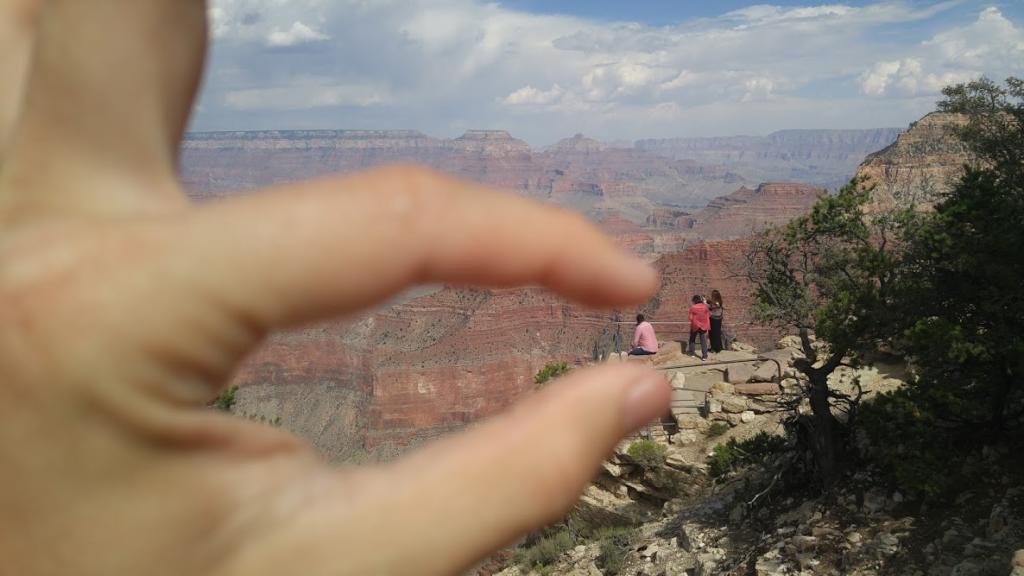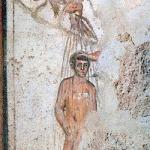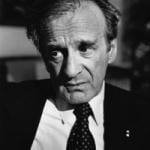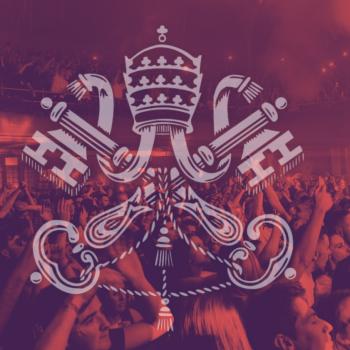One of America’s greatest poets and bards, Billy Joel, told us only the good die young. I’ve been thinking a lot recently about the good and about dying young. This was triggered, you might say, by two events. Last semester, I had a fascinating conversation with one of my favorite professors about dying young. Many figures in the 19th century died young and often not in the ways one might expect. Nearly every person of color in the period I study (and many white activists) died before the age of forty. Some were murdered or assassinated, others died from disease, still others perished after simply using up their bodies on behalf of causes they loved. Second, I found out in the last few days that a dear friend, who is also not yet forty, has entered hospice and his final days. Jonathan was diagnosed a little over a year ago.
He’s special to me for many reasons. When I was a first year at Washington University in St. Louis, he was in the midst of his doctoral work in the English department. He guest lectured in my freshman writing seminar the week we read an essay by Walker Percy, which he had suggested for the syllabus. Jonathan also made one of the most important contributions to my young literary life. He told me I should read a novel called Gilead by Marilynne Robinson. I hadn’t heard of the book or author. I also taught his daughter in Sunday school for three years. His illness hit me harder than I could have expected. I thought then it would be fitting to reflect on those who die young and leave behind unfinished business which the rest of us are called to continue. This will serve both to introduce my work and a bit of my perspective on the project of history. So, I want to tell you two stories.
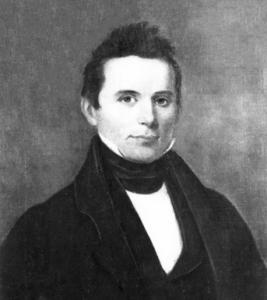 Elias Boudinot may seem a strange name for a Cherokee man born in 1800. I think it’s worth noting how and why Boudinot chose and took up this name. It was a custom among the Cherokee that a child would be given a name at birth and then take a second, adult name from a figure they admired—warrior, holy person, leader, etc. Boudinot’s birth name was Gallegina Watie (or Uwatie or OoWatie depending on the source). At some point before leaving to attend a mission school in Connecticut, he was given the nickname “Buck,” which seems to have stuck for some time. It was only in 1818 as he journeyed to the mission school that he took the name by which he has been known to history. Traveling with other students, he stopped and met several famous figures including Thomas Jefferson, but the one who left the strongest impression on the young Cherokee man was Elias Boudinot.[1] The elderly Boudinot had been a member of the Continental Congress and a congressman under the new Constitution. In 1818, he was the president of the American Bible Society, which he had helped to found.[2] The elder Boudinot gave Gallegina permission to use his name, and the freshly minted Elias Boudinot the younger continued on his journey to Connecticut.
Elias Boudinot may seem a strange name for a Cherokee man born in 1800. I think it’s worth noting how and why Boudinot chose and took up this name. It was a custom among the Cherokee that a child would be given a name at birth and then take a second, adult name from a figure they admired—warrior, holy person, leader, etc. Boudinot’s birth name was Gallegina Watie (or Uwatie or OoWatie depending on the source). At some point before leaving to attend a mission school in Connecticut, he was given the nickname “Buck,” which seems to have stuck for some time. It was only in 1818 as he journeyed to the mission school that he took the name by which he has been known to history. Traveling with other students, he stopped and met several famous figures including Thomas Jefferson, but the one who left the strongest impression on the young Cherokee man was Elias Boudinot.[1] The elderly Boudinot had been a member of the Continental Congress and a congressman under the new Constitution. In 1818, he was the president of the American Bible Society, which he had helped to found.[2] The elder Boudinot gave Gallegina permission to use his name, and the freshly minted Elias Boudinot the younger continued on his journey to Connecticut.
Ever since I learned about him, I have felt a greater kinship with him than perhaps any other person I have studied. He is also among the most controversial. For many years, most scholars regarded him as having committed cultural treachery against his people for signing a treaty which agreed that the Cherokee Nation would move West to Indian Territory. For this crime, he was assassinated along with his cousin John Ridge and his uncle Major Ridge weeks after arriving in Indian Territory on the far side of the Trail of Tears. He was asked for medicine and when he turned towards his house to help who he believed was his hurting neighbor, three men tomahawked and knifed him to death in his front yard. Why did Boudinot choose to make these decisions? From a new name to signing a treaty agreeing to removal to that fateful moment of his assassination, An answer requires a short biography of the intervening twenty-one years.
During his time at the Cornwall School, Boudinot was an (one might even say “the”) exemplary student. Several of his instructors sent his work to Yale professors as evidence of the project’s success while lamenting that he could not attend the University because he was an Indian. He wrote fundraising letters for the Cornwall school to donors across the United States and Europe. Then he became sick. The school’s authorities feared he might die. In an attempt to nurse him back to health, he was placed in the care of a local family. The family’s youngest daughter, a woman named Harriet Ruggles Gold, tended him. They fell in love, and after a lengthy disputation, which turned into a national crisis, they were married. I’ll most likely return to this subject in a later column. For the moment, suffice it to say that it is not an exaggeration to say that their marriage was the most controversial inter-racial marriage of the nineteenth century.
By this time, Boudinot had been commissioned by the Cherokee national council to raise money from sympathetic whites for the purpose of starting a national newspaper. He spoke in around a dozen cities and raised enough money to purchase a printing press and commission a set of type in the characters of the Cherokee syllabary. This meant that when the Cherokee Phoenix began printing in February of 1828, the newspaper was published in both Cherokee and English and could be read by audiences who read either language. Boudinot continued as editor and as the leading promoter of Indigenous rights within the United States until 1832 when he resigned from the Phoenix. He found himself disallowed by the national government of the Cherokee Nation from presenting his actual views in the newspaper. Boudinot had become convinced that the Cherokee should remove to Indian Territory instead of fighting to remain any longer. He feared that Jackson and his allies would wage a war of extirpation in order to take the Cherokee’s land. Thus, if the people were to continue, they must do so in other lands. Knowing he was taking his life into his hands, Boudinot signed the Treaty of New Echota, agreeing to removal. It was for this “crime” that he would be assassinated.
Boudinot and his compatriots’ stories have also already inspired future generations. As Alisse Portnoy and others have shown, American abolitionists, whatever their faults (and they had quite a few), were inspired by the failure of those working on behalf of Indian rights. Many abolitionists were in fact the children and grandchildren of the activists who attempted to prevent the trails of tears. They watched earlier an earlier generation’s failure vowed to find a way to succeed with their own cause.
When my friend Jonathan first told me to read Gilead, there’s no way I could have known how it would influence me. Perhaps though, he had an inkling. I asked Jonathan if, when I finished reading it, we could sit down and dissect the book. I was fresh out of my Shakespeare seminar and eager to tear meaning out of texts with or without the author’s consent. We were standing in our church’s basement with aging, yellowed walls and a distinct scent that I once heard described as the afterlife of generations of casseroles. He looked back at me with a gleam in his eye and said something I’ll never forget. “When you finish reading it, you won’t want to dissect. All you’ll want to do is bask in the glory of God.” I nodded and walked away, thinking to myself that I had no time for basking. Dissecting and tearing. That was the stuff University was teaching me.
Of course, he was correct. I quit reading Gilead with sixty pages left because I didn’t want it to end. I wept. I wasn’t sure if any book would ever be so beautiful to me again. Indeed, I could not have imagined how much Percy and Robinson would come to shape my thought and approach to life. Reading them for the first time left a nuclear fallout of beauty in my life, and I still carry the marks.
The Percy essay I read unknowingly at Jonathan’s behest is titled “The Loss of the Creature” and comes from Percy’s remarkable volume The Message in the Bottle. The essays begins by talking about how nearly impossible it is to enjoy the Grand Canyon due to its cultural mythology shaping our experience of it. (Hence, the picture above this article taken as I thought about that Percy essay, sitting on the edge and trying not to take photographs. Percy guarantees that the one certain way to ensure you miss the Grand Canyon is to take pictures).
Eventually, I would get to interview Marilynne Robinson for a journal of Christian thought at WashU and bask in the goodness of God with her. I would even have the opportunity take a class with her amidst Covid during my master’s. As she wrote in Home, “There’s so much to be grateful for, words are poor things.” That is what I owe to Jonathan. I also owe to him a phrase from Claude McKay that echoes in most bios I’m forced to write: “Rebellious Traditionalist.” If that doesn’t have a ring to it, I’m not sure what does.
Jonathan’s work has centered on writers like McKay, an avowed communist who converted to Catholicism but maintained his communitarian principles. He has called them the “Christian literary left,” and their ranks include such luminaries as W.H. Auden, Walker Percy, Dorothy Day, T.S. Eliot, and lesser-known figures like Vida Scutter, Ralph Adams Cram, and James Dabbs. He pulls all of them together in his book, Communion of Radicals: The Literary Christian Left in Twentieth-Century America. As one reviewer put it, “McGregor creates quite the challenge for himself: Develop a theory of radical Christian literature, fit writers into it and ground a revival of such literature.” But this is Jonathan’s way. He is a poet, a storyteller, and a scholar I aspire to be like. After receiving my first course evaluations from students at the close of this past semester, I decided to glance at Jonathan’s. What I saw didn’t surprise me in the least. His students loved him because he cared about them and helped them learn deeply.
I ended up having to take a leave of absence from WashU after my dad died. Jonathan and his dad comforted me during that time, and he graduated with his PhD before I returned. Jonathan and all his family moved so he could take an academic post in another state. We lost touch for nearly six years. We saw each other occasionally on social media, but enveloped in chaotic schedules that was about it. Until, one day I saw a Facebook post that scared me: Jonathan’s mom had posted a meal train. It made me think he was sick, and I decided to reach out. We had two phone calls this past fall. We talked about academia and family and the weirdness of being southern and intellectuals. And it seemed like he might get better. Until a couple days into the new year when I saw an update from his mother. I learned that Jonathan had moved into hospice and had been given a prognosis of months at the absolute best. They had shifted from trying to cure to pain management. I wept again. I lost my father when I was twenty, and we didn’t have a great relationship. What could it be like to lose a father so much better and at a much younger age? I still struggle to think about it without welling-up with tears. Like the deaths of these other men, it is unjust. It’s the calumny and cruelty of a world not set right yet—a world in waiting and error pining—as a song many of us sang short weeks ago reminds us.
We are left to wonder then, are these merely a string of sad stories? Surely each of these stories could have had an ending that we hope would have been better. And yet, to quote Marilynne Robinson once more, “In eternity this world will be Troy, I believe, and all that has passed here will be the epic of the universe, the ballad they sing in the streets. Because I don’t imagine any reality putting this one in the shade entirely, and I think piety forbids me to try.” These stories are the epic of eternity, and as a historian, I have the privilege of being a memory keeper. My research focuses on the forgotten and misremembered. It is figures like these whom I study and hope to emulate in my vocation—prophetically calling the church and the nation to stand up to the height of their promises and highest ideals.
In telling the history of the great sins of the United States and its empire, we must write clearly and without whitewashing—of any sort—but we must also tirelessly describe those who resisted. No matter how futile that resistance may seem to us. Just as there were always prophets who confronted monarchs who turned from God in the Hebrew Bible, throughout history, there has never been a time of great evil when there were not those who stood in opposition. The Native and African American figures I study did this in their own ways against the expansionist United States Empire and its “Manifest Destiny.” Jonathan wrote about how other Christians did this in the mid-20th century and along the way helped inspire me to pay attention to such forgottens. They are truly the ones the writer of Hebrews tells us the world was not worthy of. I’ll leave you know with this poem by Emily Dickinson from which the title of this post is taken:
I shall know why—when Time is over
And I have ceased to wonder why
Christ will explain each separate anguish
In the fair schoolroom of the sky
He will tell me what “Peter” promised
And I—for wonder at his woe
I shall forget the drop of Anguish
That scalds me now—that scalds me now!
[1] John Demos, The Heathen School, p 148
[2] Ralph Henry Gabriel, Elias Boudinot p 30; Teresa Gaul, To Marry an Indian, p 6; Theda Perdue, Cherokee Editor, pp 3-6


